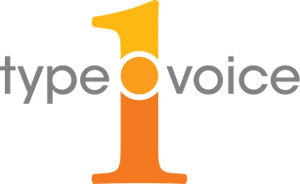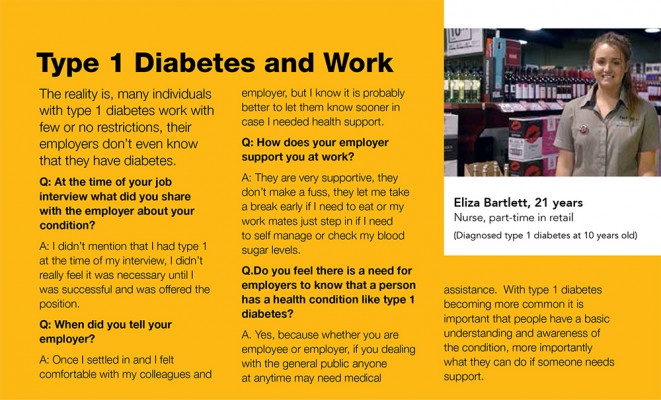Most people have heard of diabetes and think of it as a “lifestyle” disease – one that can be avoided or managed by means such as diet and exercise. But did you know there’s more than one type of diabetes? One which doesn’t just strike those in middle or older age, or those with high blood pressure, weight problems, a poor diet and a lack of physical activity.
Type 1 diabetes, sometimes called juvenile diabetes, is an autoimmune disease that usually occurs in childhood and lasts a lifetime.
While it can be diagnosed at any age, it typically first occurs in people under the age of 30.
There is no way to prevent or cure this disease and its causes are not fully understood, though genetics and environmental factors are believed to play a role.
Type 1 diabetes affects more than 122,300 people in Australia alone and 2000 people are diagnosed with it here each year – but it remains relatively unknown, probably because it accounts for only 10-15 per cent of all cases of diabetes.
The disease destroys the body’s ability to produce insulin, a vital hormone that keeps us alive. Insulin lets our body process sugar to create energy – without it, we literally starve as we cannot digest food.
People with type 1 diabetes need multiple injections of insulin every day or to be connected to an insulin pump every day. Sadly, though, insulin is not a cure for this cruel disease.
People with type 1 need to strictly manage their blood glucose levels 24 hours a day, which can place a lot of stress on them and their families.
They live in constant fear of the potentially life-threatening extremes of hypoglycaemia, or low blood sugar, and hyperglycaemia, or high blood sugar.
On top of that is the considerable risk of serious complications, which can include eye disease and blindness, nerve damage and amputation, kidney disease and failure, heart attack and stroke, pregnancy complications and depression. People with type 1 diabetes go to school and work; play sport; have hobbies and social lives just like the rest of us.
In the workplace, just as in the wider world, they need to monitor and manage their condition carefully. And just like other workers, they may need health support at some time – whether routine or emergency.
There is plenty of anecdotal evidence to show that some people run their blood sugar levels higher to avoid having a hypoglycaemic attack at work – which has detrimental long-term impact on their organs.
Young people may also find it daunting to start a conversation with their employer or potential employer – the fear of judgment and discrimination is often the cause of young people going off the rails with their health management.
But it doesn’t need to be this way.
The most effective way to reduce the risk of adverse health impacts is for people to manage themselves well and feel comfortable that they have access and privacy in an accepting and educated workplace. Indeed, there are many high achievers living and working effectively with type 1 diabetes.
It’s vital that employers and fellow employees allow those with type 1 diabetes to fulfill their employment aspirations without barriers.
Type 1 Voice policy positions on rights at work for employees with type 1 diabetes:
- Employers cannot discriminate against a person based on the fact that they have type 1;
- First aid officers should ensure they have up to date training; which routinely includes management of first aid situations related to diabetes;
- People with type 1 are unlikely to experience a diabetes-related emergency if the workplace enables them to self-manage their wellbeing and provides them with appropriate flexibility and understanding when it is required;
- People with type 1 are responsible for self-managing their care every day, including in the workplace;
- If a person with type 1 is unwell for any reason, and unable to perform their job safely, they should not be at work – just like any other person;
- Type 1 can be well managed and does not lead to any more days away from work than other people in the community;
- People with type 1 self-manage their condition by testing their blood glucose levels regularly, adjusting their insulin intake accordingly and keeping themselves in good general health;
- Workplaces should create a safe and supportive environment for people with type 1, which may start simply with an employer commitment to raising awareness and education


